Silo
Construction
The
silos at the 724th and 725th SMS were 150' deep and 40' in diameter
and were constructed in multiple parts and pours of heavily reinforced
concrete.
The
top 35 feet or so was excavated using earth moving equipment such as
bulldozers and backhoes, and the remaining 115 feet were excavated
using a tractor with a front-end loader and a ripper on the back (see
photo below). As earth was excavated, a crane with a clam-shell
scoop removed the loose dirt.
PLEASE
NOTE: The images in this section are very high resolution
and may take a while to load. The images are much larger than
they are displayed here, so if you save and view them you can see
them at full resolution. Please be patient and enjoy the
details.
|
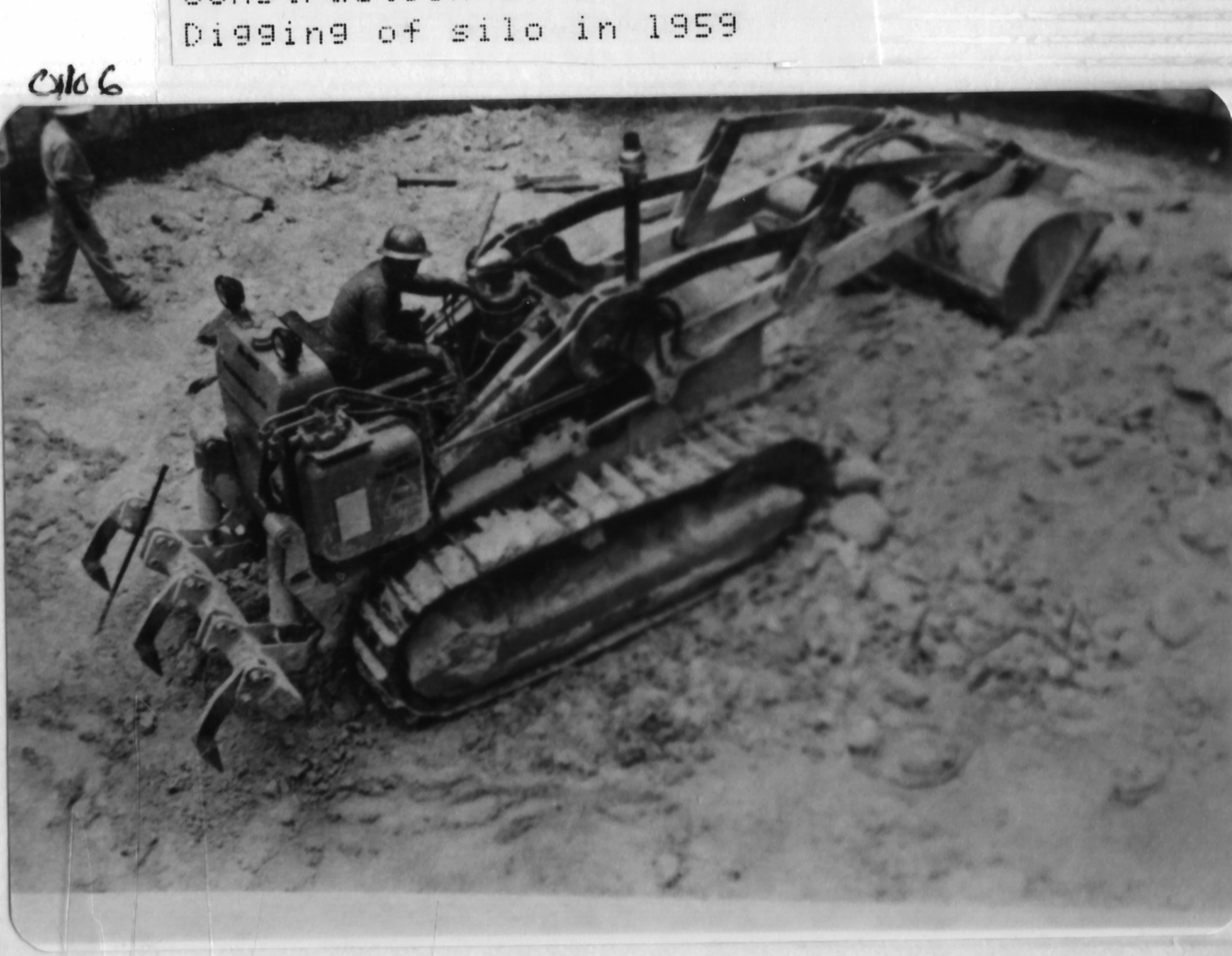
A
bulldozer excavating a silo. Loose earth was lifted out by a crane
Photo
courtesy of Fred Epler
|
The
raw dirt walls of the newly-excavated silos were sprayed with concrete
to prevent collapse until the complete depth was reached, at which
point slip forms were used to pour the permanent silo walls.
|
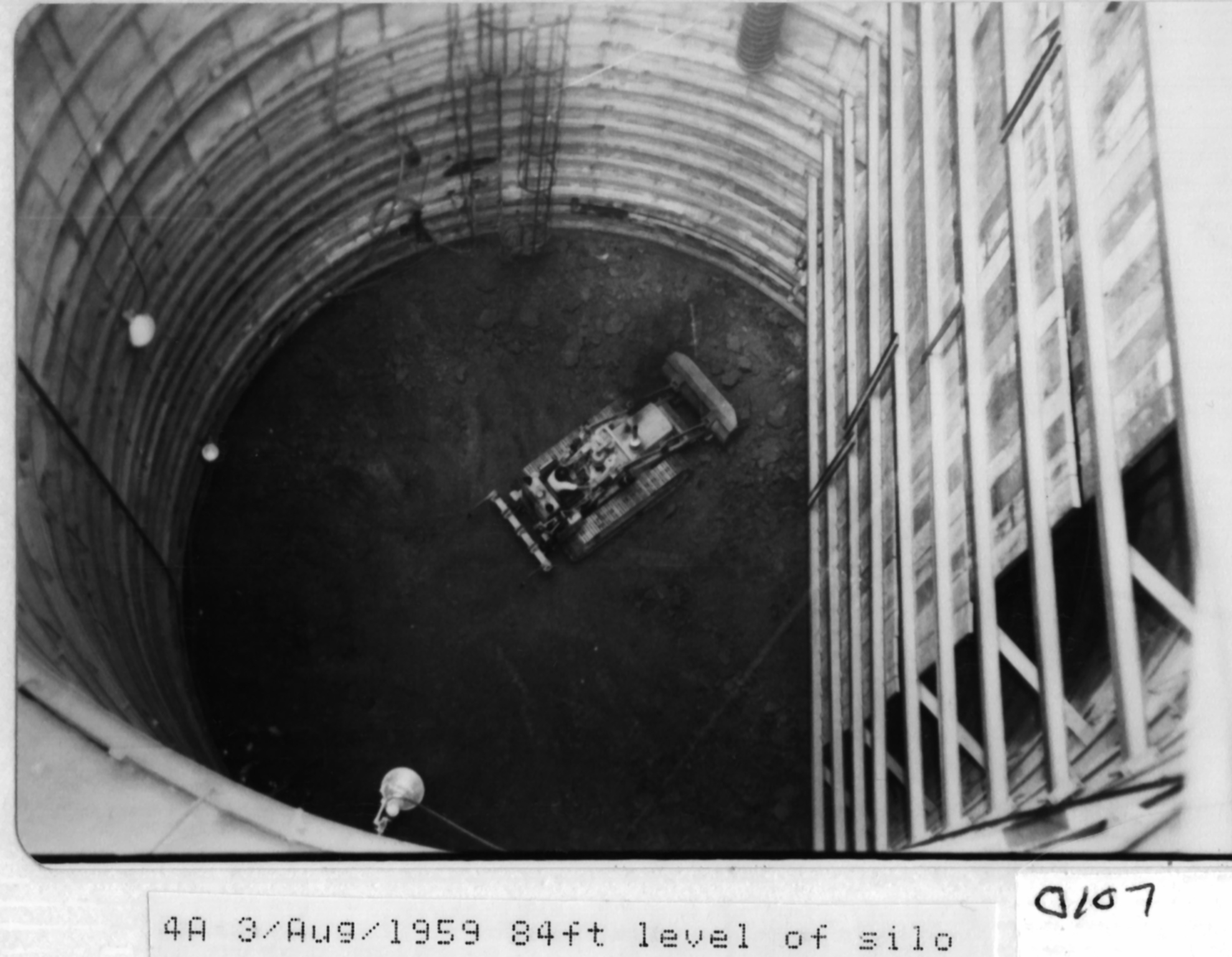
A
photo showing deeper excavation of a silo at the 724-A SMS. The
walls of the excavated silo were coated with gunite-- a spray-on
concrete, and then lined with steel ring beams to support the silo prior
to pouring the concrete walls.
Photo
courtesy of Fred Epler
|
Below
is a photo showing the steel reinforcement complete and a form being
lowered into position. As the lower pours were completed, the
forms would be raised to pour the next section.
|
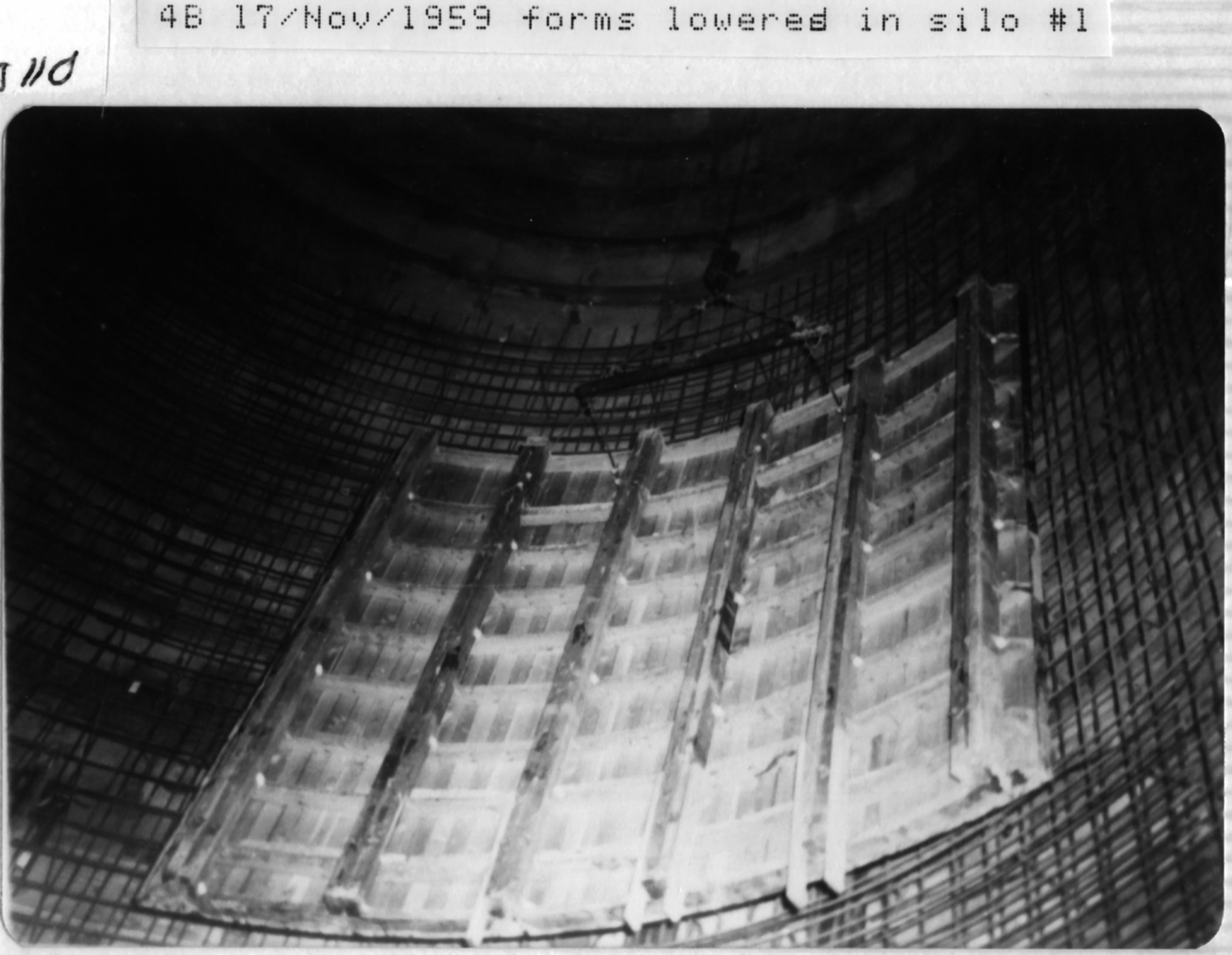
A
section of the concrete forms being emplaced for a pour at 724-B.
These forms were about 15 feet tall and after curing, the whole set of
forms were raised up for the next pour.
Photo
courtesy of Fred Epler
|
The
silo consisted of the solid lower portion and the top 35 feet, or cap,
which was a series of separate pours which were actually physically
separate from the lower portion of the silo. This was to both
prevent transfer of forces from the ground through the entire silo to
avoid damage and to allow some movement of the 2 sections relative to
each other in the case of a near-miss.
|
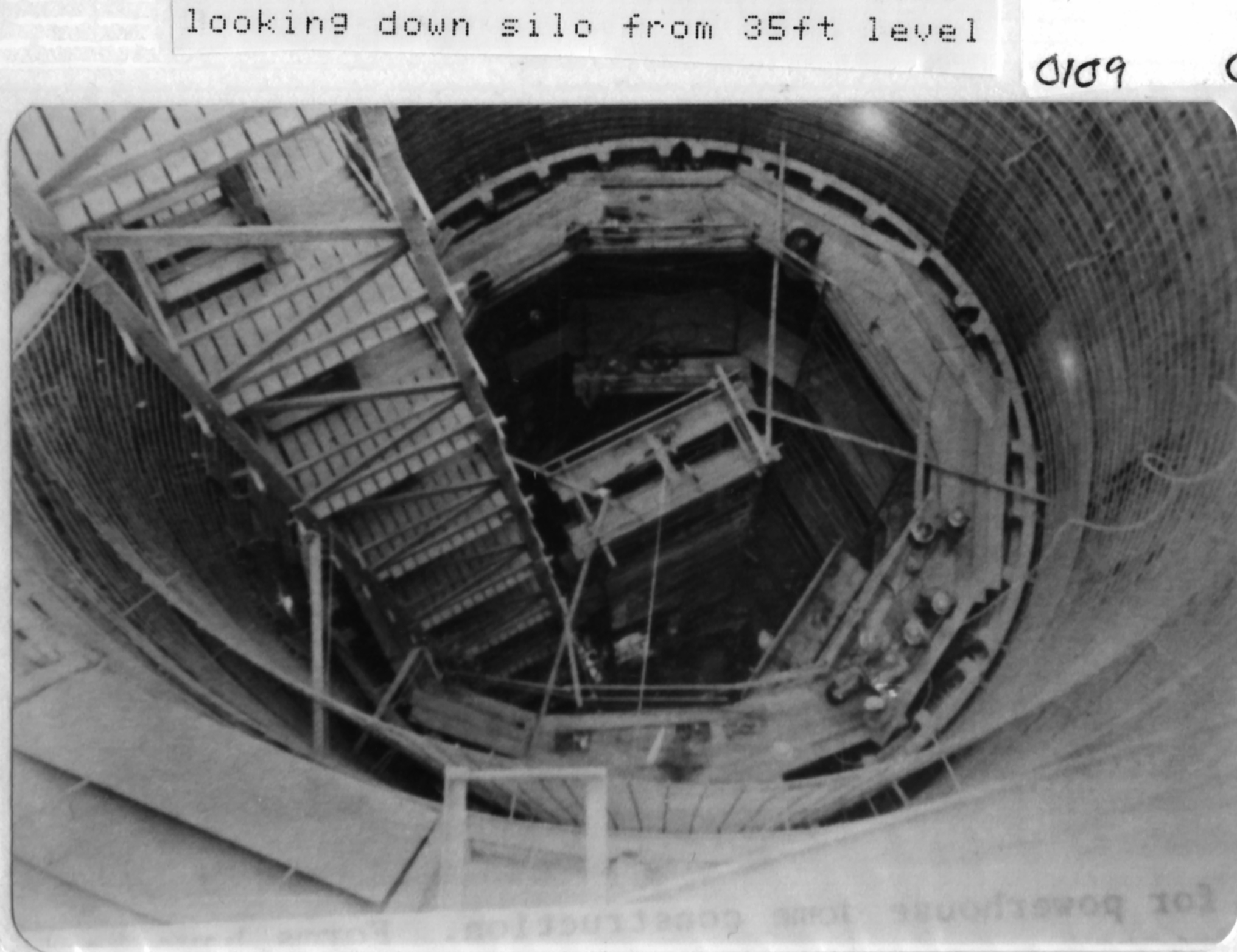
Scaffolding
and work platforms in place within an incomplete launcher silo. As
work was completed on the lower sections, other workers were able to
begin work on pipe hangers, fasteners and other structures and hardware
installed inside the silo.
Photo
courtesy of Fred Epler
|
|
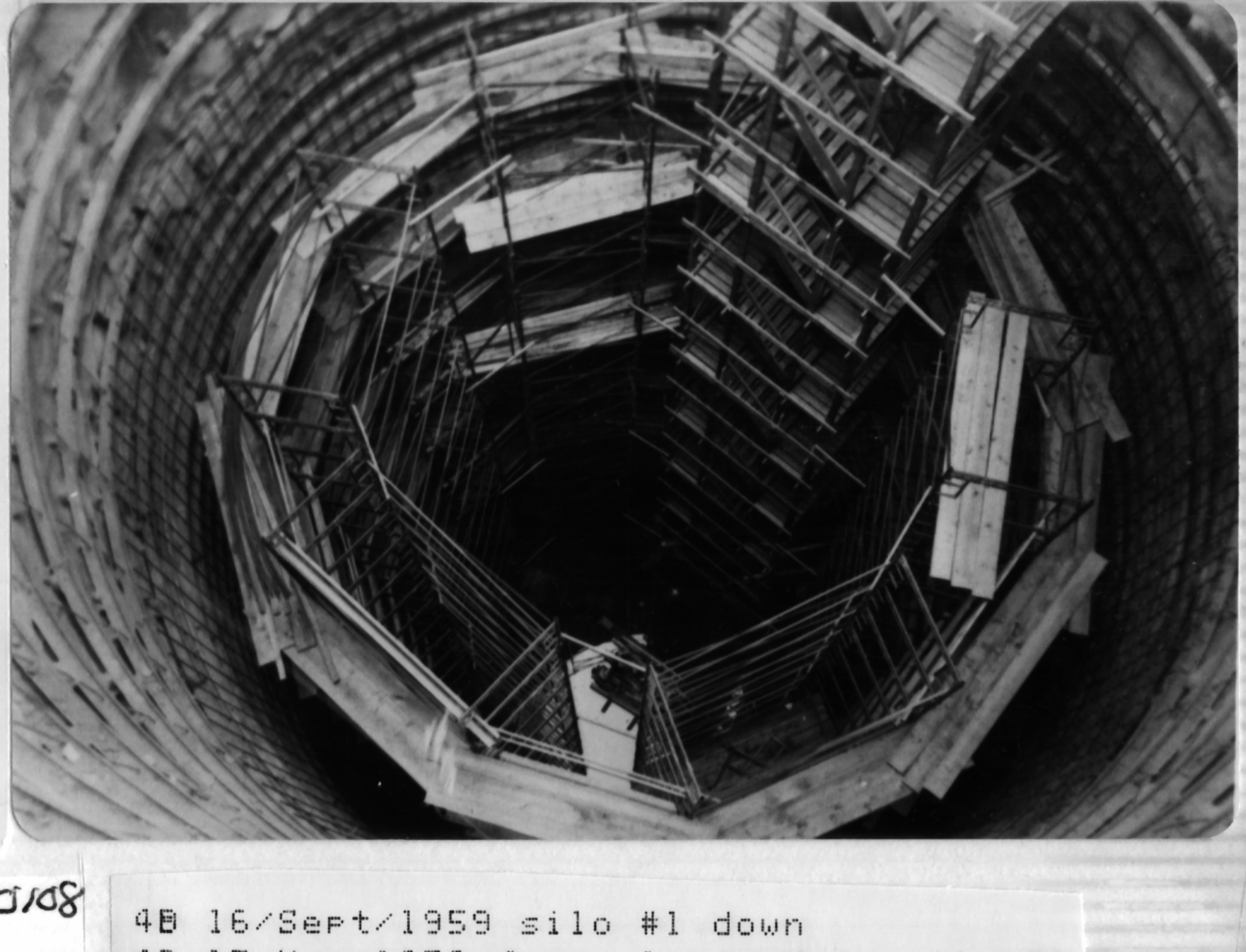
Another
view of work platforms and scaffolding in launcher silo #1 at Lowry
complex 724-B.\
Photo
courtesy of Fred Epler
|
To
keep pace with the very demanding schedule, all silos were under
construction simultaneously. With all the workers on site, there
were few fatalities at the Lowry sites during construction. The
launcher silos were very dangerous areas to work, but the installation
of netting in the silos reduced the number of fatal accidents by
two-thirds.
In
all there were 3 fatalities during construction at the Lowry sites:
These
3 tragedies underscore the hazards involved in projects of such scale,
however it should be noted that the human toll of the Lowry Titan I
construction efforts were very low when compared to other such
projects. In fact, after July 15th 1960 there were no further
serious injuries and the safety record of the Lowry construction
projects was the best of the 5 areas where the Titans were
built. Over the entire project-- 1959 through 1961, there were
only 27 injuries that resulted in lost work hours at the Lowry sites.
|
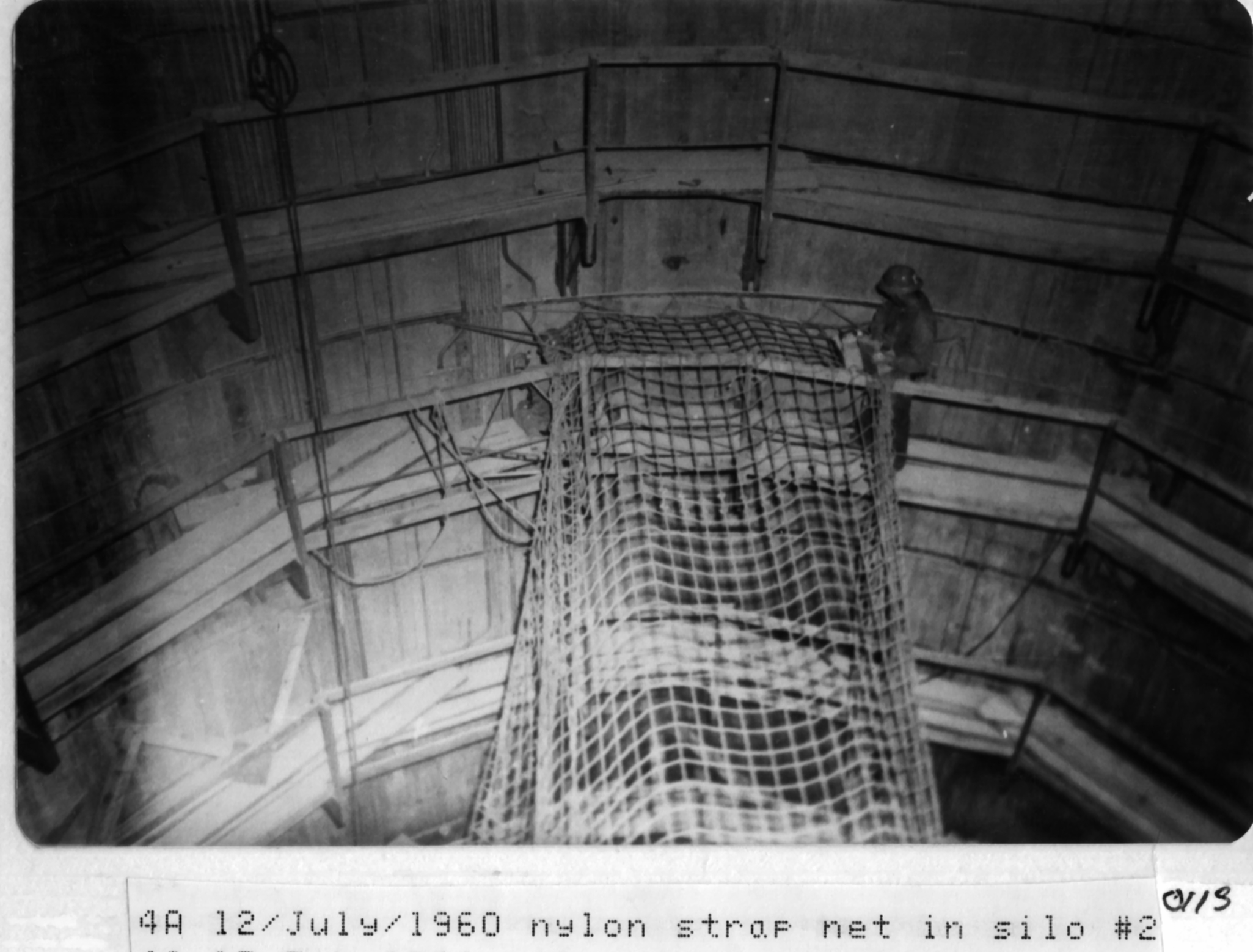
Installing
safety netting in the silo.
At
the 6 Lowry complexes, this netting saved the life of 2 workers: a
carpenter who fell 90' and received only minor bruises, and a pipe fitter
who fell 70' receiving only an ankle injury. Both incidents surely
would otherwise have been fatal.
Photo
courtesy of Fred Epler
|
As
you can see in the following pictures the job of bending and
assembling the reinforcing steel was a massive one. Thousands of
tons of steel re-bar went into the construction of each silo.
Obviously, steel was crucial to a construction project of the size and
sort comprising a hardened underground missile facility. From a
scheduling standpoint this would become an insurmountable obstacle
early on.
The
greatest delay for construction of all the Lowry sites was due to a
nationwide steel workers strike lasting 114 days that began on July
14, 1959. Due to the unforeseen nature of this delay however,
the prime contractor, Morrison, Knudson & Associates was granted a
time extension to account for the lost 114 days where steel could not
be obtained at all.
As
a side note, the result of the 1959 steel workers' strike ushered in
the demand for foreign steel which had a profound negative effect on
the US steel industry.
|
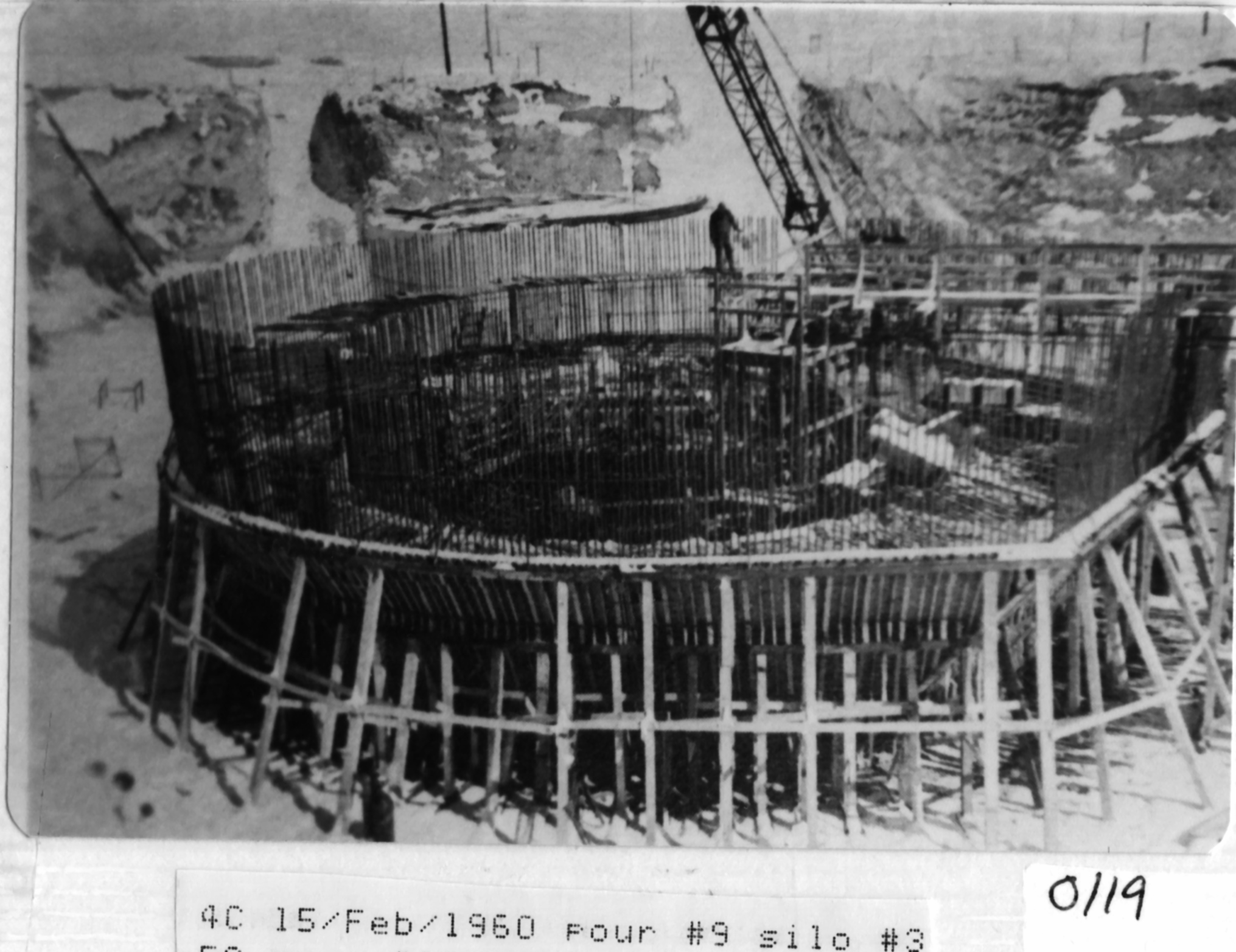
Forms
and reinforcement for the cap section of 724-C silo #3
Photo
courtesy of Fred Epler
|
|
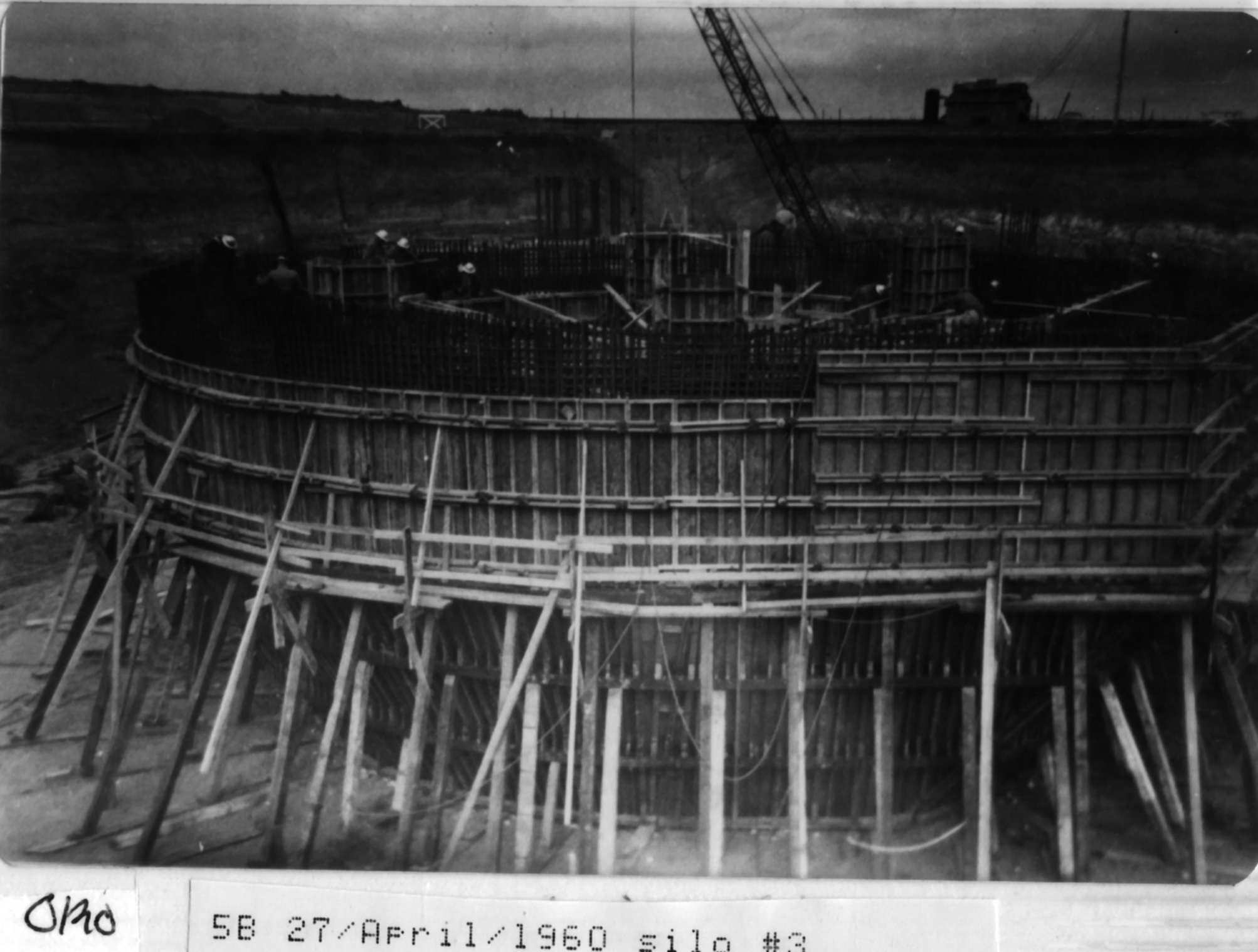
The
forms being placed for the final few pours. The concrete and steel
at the top of the cap are over 15 feet thick in places.
Photo
courtesy of Fred Epler
|
|
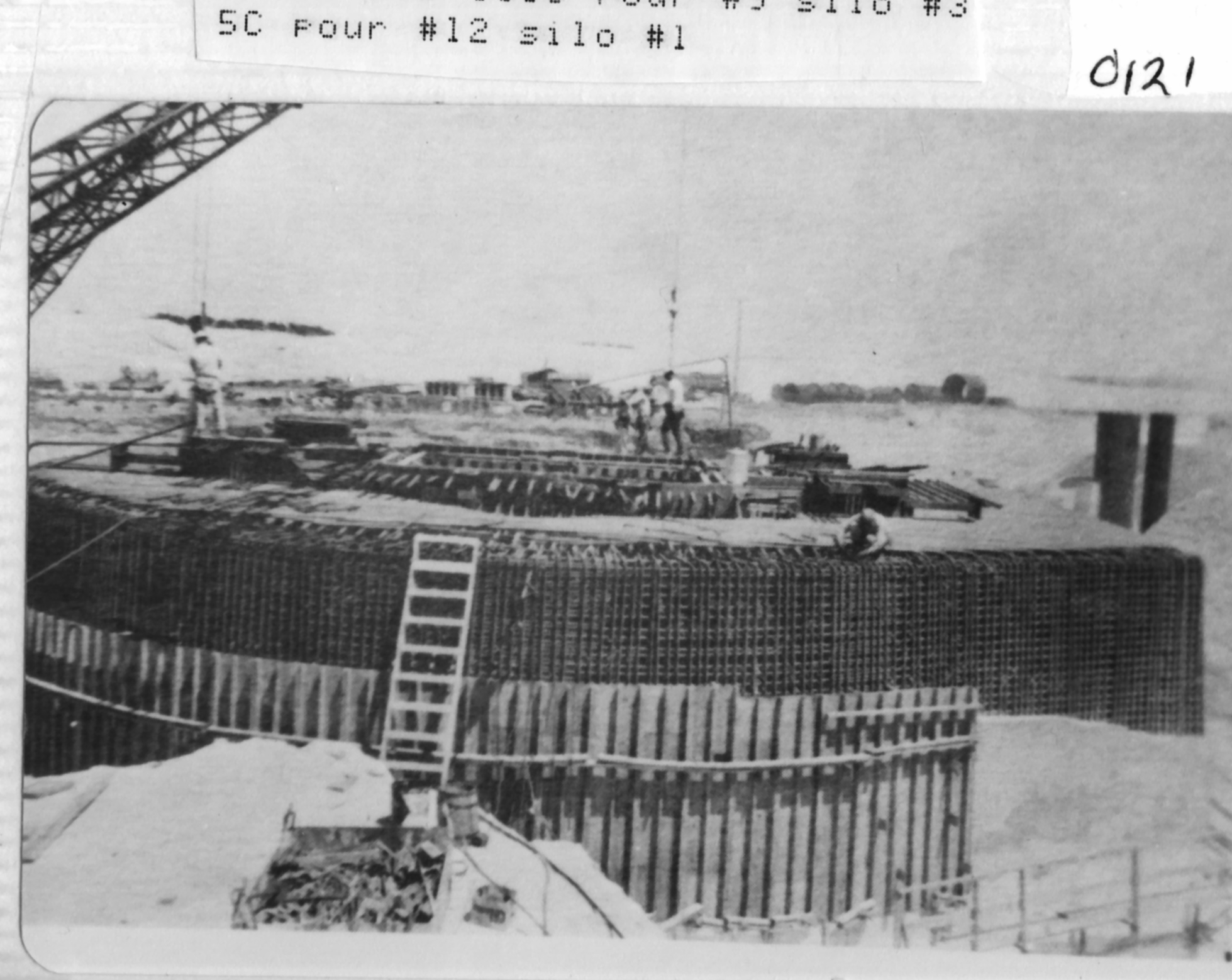
Preparing
for the final concrete pours comprising the silo cap. Note the
density of the steel reinforcement rods in the cap.
Photo
courtesy of Fred Epler
|
|
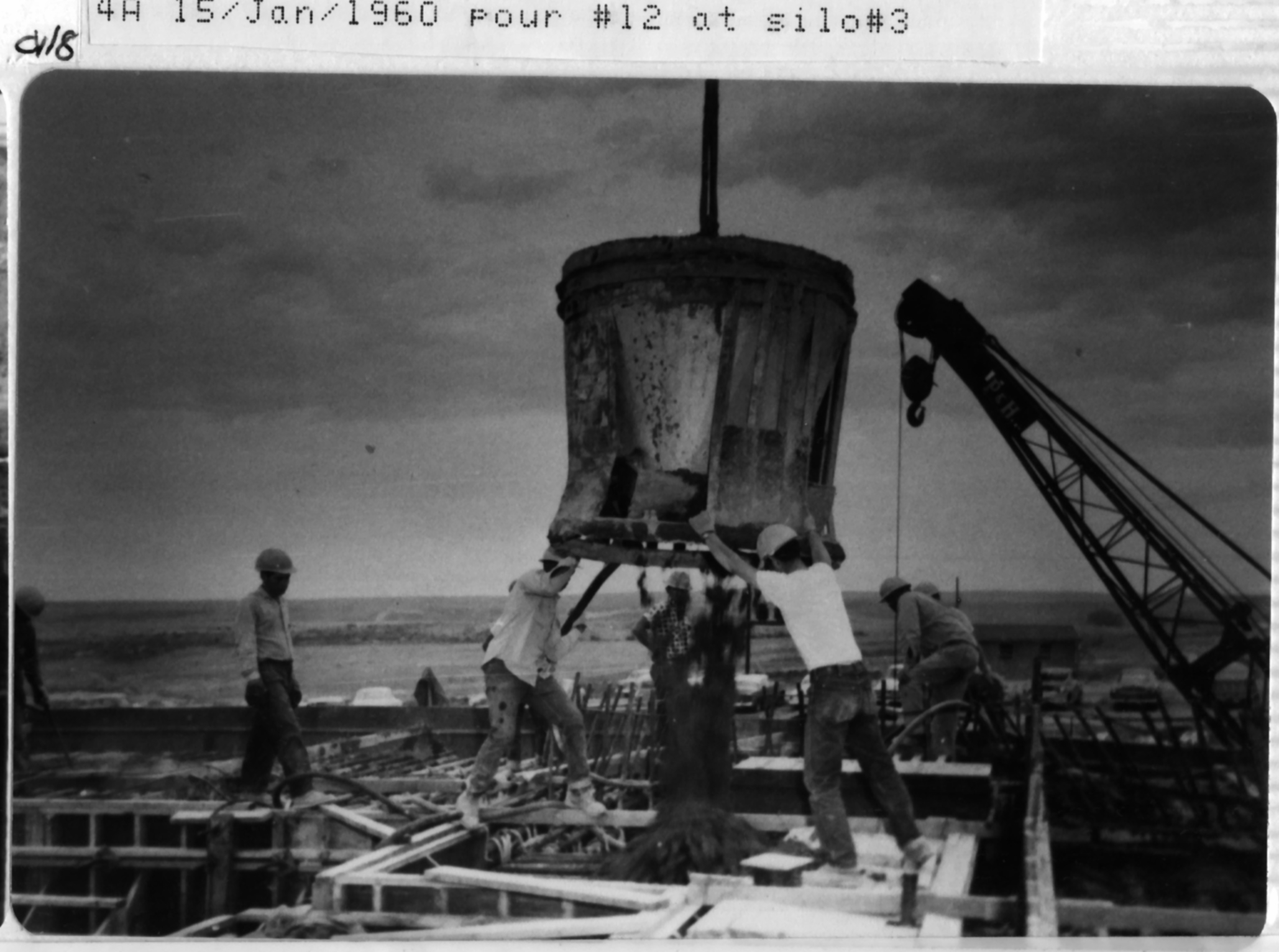
Pouring
concrete at 724-A silo #3
Photo
courtesy of Fred Epler
|
|
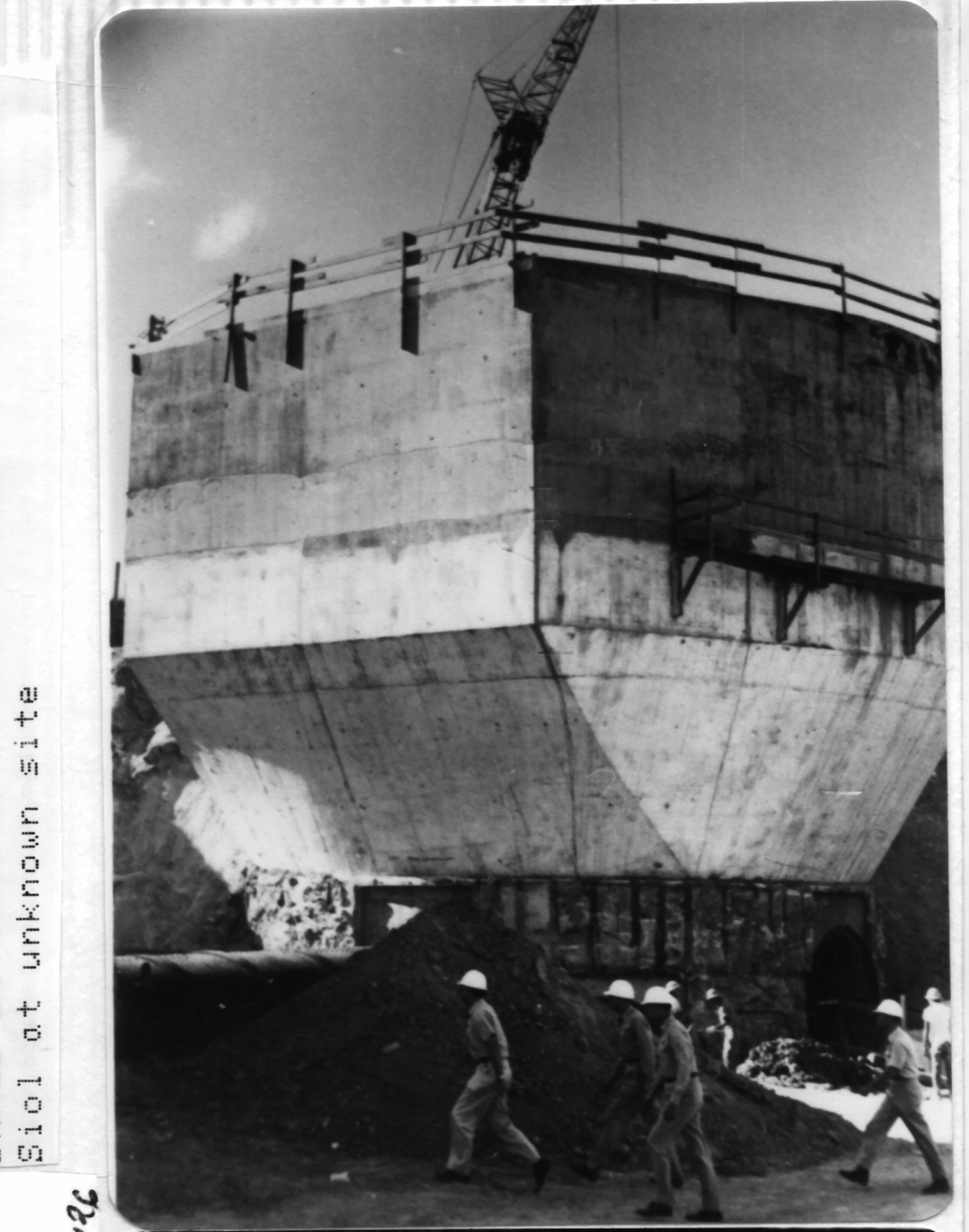
A
completed silo cap prior to backfilling
Photo
courtesy of Fred Epler
|
In
the next section, we'll look at just how insane the author of this
site can be when it comes to curiosity and defunct Cold War era
military installations. Click below to view my utter madness.
Missile
Silos Part IV

| Contact
|
Site Map | Links
|
Hosted by
InfoBunker














